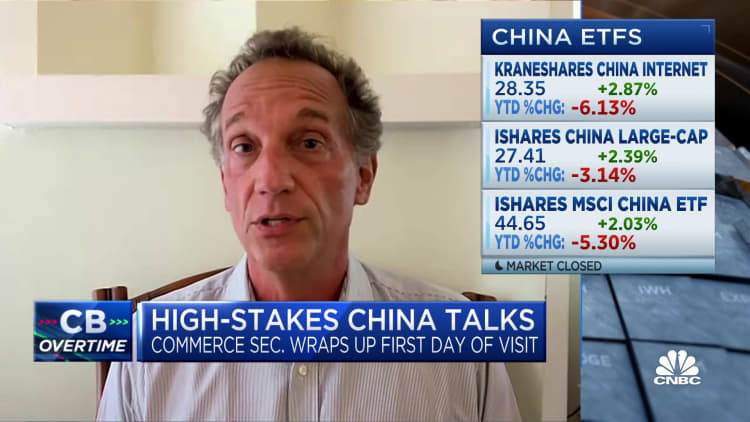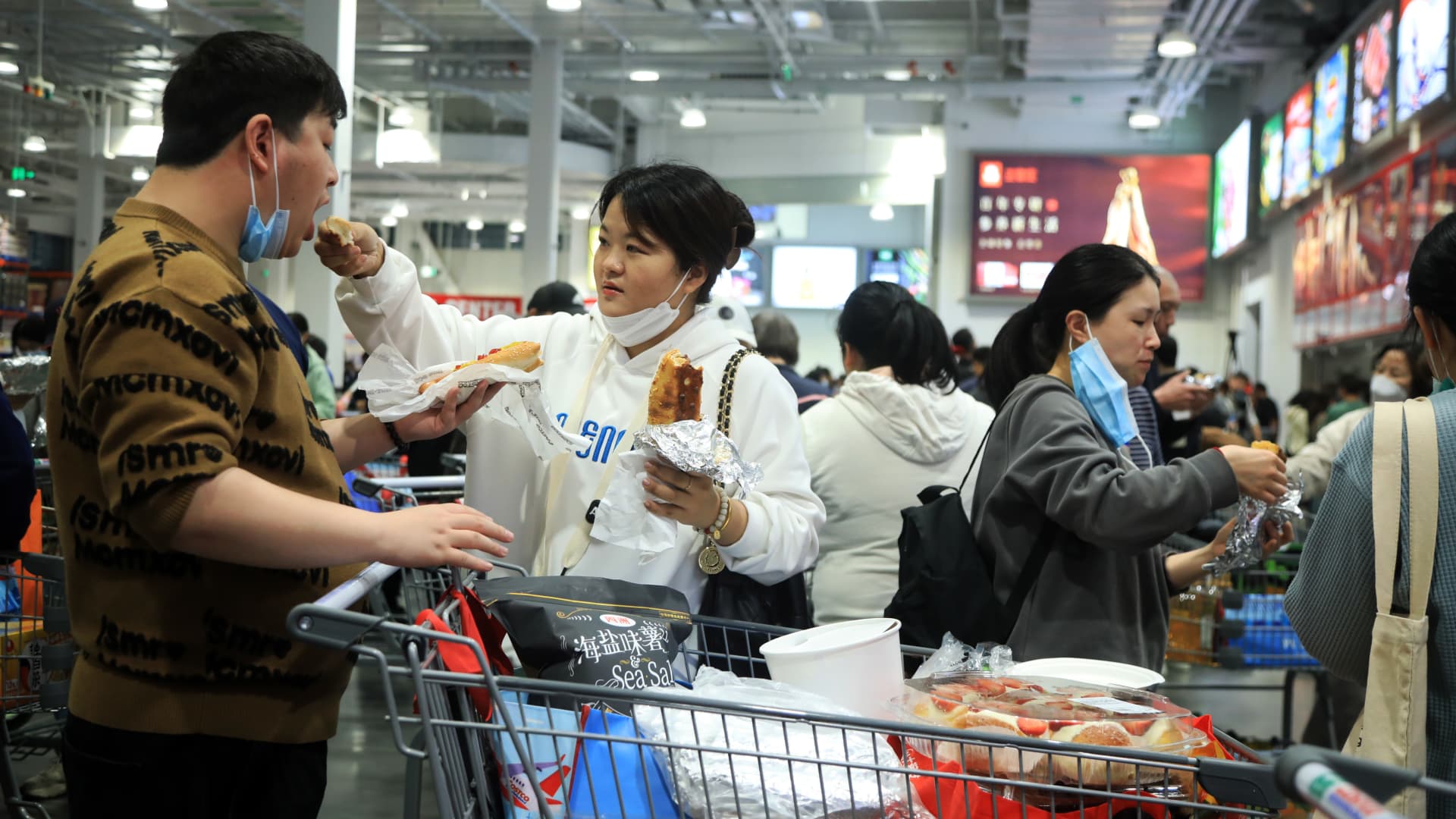Customers enjoy food at a new Costco store in Shanghai on the first day of its trial operation on March 10.
China News Service | China News Service | Getty Images
BEIJING — If retail sales slowed this summer, it hasn’t felt that way in parts of China.
In the weeks around early July, New York residents David and Susan Schwartz visited three Costco stores, known as warehouses, on the outskirts of Shanghai and the neighboring city of Suzhou.
They said average daily foot traffic was around 7,000 people — double that of the U.S. — for stores that are about the same size.
“In China we just saw a lot of people every day we went, anytime we went, from morning to evening, weekdays and weekends, just lots and lots and lots of people,” said David Schwartz. “We didn’t get a sense of any ebb and flow at all.”
That contrasts with Costco locations in the U.S., where weekdays aren’t as busy as the weekends, he said in an interview last week.

David and Susan are co-authors of the forthcoming book “The Joy of Costco: A Treasure Hunt from A to Z.” They spent seven years visiting warehouses in nearly every region where Costco has a presence — more than 10 countries and over 40 U.S. states.
The book is not sponsored or officially authorized by Costco, although the U.S. retailer has put in orders to stock it, the Schwartzes said. Costco did not immediately respond to a request for comment.
China’s retail sales slowed to a 2.5% year-on-year increase in July, adding to growing uncertainty about the country’s future growth.
Meanwhile, Costco opened two new stores in China this summer: One in Hangzhou, where Alibaba is headquartered, and another in the city of Ningbo, a two-hour drive away. Annual membership, excluding promotional discounts, costs 299 yuan ($41) versus $60 in the U.S.
The premium market
The wholesale retailer is far from being the only foreign brand expanding in China.
In August, premium New York-based skincare brand Malin+Goetz opened its first mainland China store in Shanghai. Coach parent Tapestry this month said it plans to open a net of 10 Kate Spade stores on the mainland in the fiscal year ending summer 2024.
“There are some multinational companies, they’re still having a hugely successful business in China,” Chris Reitermann, CEO of Ogilvy Asia Pacific and Greater China, said in an interview Friday.
“What you will see is the premium market will definitely continue to do well,” he told CNBC. But “targeting [the] middle class, that will be challenging. You will see people trade down.”
Definitions of middle class can vary by country. In China, McKinsey Global Institute estimates the upper-middle class earns an annual income of more than 160,000 yuan ($21,950).
Between 2019 and 2021, that income category grew from 99 million households to 138 million, the institute estimates. It expects another 71 million households could enter that higher income bracket by 2025.
As large those numbers may be, that also means most households earn far less. China has a population of 1.4 billion — about four times the size of the U.S.
Ad spending drops
Pockets of growth haven’t been enough to assuage uncertainty.
Companies are holding off on marketing campaigns, Ogilvy’s Reitermann said.
“Media spending is between 10% to 20% down versus last year, and last year was not a good year because last year was down versus the year before,” he said. “So you have a kind of a double decrease. That’s across the board.”
China’s economic recovery from the pandemic lost steam after the first quarter, with tourism a rare bright spot. The official consumer confidence index plunged in April to near lows last seen in fall 2022, when China was still grappling with Covid controls.
Even at the lower end of the spectrum, [China is going to have] 3% to 4% GDP growth over the next three years.
Chris Reitermann
CEO, Ogilvy Asia Pacific and Greater China
The massive property market, where the majority of household wealth is stored, accelerated its decline in July.
“You can tell we’re speaking in a time of uncertainty where we see a very healthy first half of the year, but there are indicators to watch going forward which will impact the outlook for the next 12 to 18 months,” McKinsey senior partner Daniel Zipser said in early August.
He said companies need to think about being successful in China in the next two to three years, rather than the next 12 months.
New business skills
Costco opened its first warehouse in mainland China in 2019, and has said it plans to open its sixth location in the fall.
Within the limit of 3,800 items per store, the warehouses stock a large variety of seafood, Chinese “baijiu” alcohol and truffle soy sauce, said Susan Schwartz.
“The Chinese consumers have a great appreciation for high value and great prices,” she said, noting she saw people of all ages at the warehouses.
Costco is due to release quarterly earnings in late September. In the last few weeks, Apple, Starbucks and Tapestry reported revenue growth in China for the latest quarter.
“Even at the lower end of the spectrum, [China is going to have] 3% to 4% GDP growth over the next three years,” Reitermann said. “I just came back from Germany … where we have negative GDP growth and people still seem to be able to run a successful business.”
The difference is that China has been growing rapidly for decades – most of professionals’ working lives.
Companies might not have staff in China with experience managing a business when there’s no massive natural growth, Reitermann said, noting businesses will be much more focused on profit than growth, and will need people who are “much more strategic.”

